Seaweed bread, different and with a subtle flavor of the sea

If you like original breads with different flavors, and you want to surprise more than one person, seaweed bread is ideal. We love how it combines with appetizers, to make different toasts or canapés, and it will look great on any table.
In this recipe we will make an easy-to-prepare seaweed bread, with basic flours and no mixtures, so that we can appreciate all the flavor that the seaweed gives it. This seaweed bread does not require difficult kneading, it does not use sourdough but a yeast ferment and, in case you still have doubts, the shape will also be very simple. But do not be fooled by such simplicity, because its flavor is complex and wonderful.
As in any other bread, the rising times are relative and indicative, and may vary depending on the temperature and humidity conditions that we have in each house. Therefore, observe the mass to be able to adapt them if necessary. In the same way, baking times can also vary depending on each oven.
To prepare this bread, we have used nori seaweed, easily found on any large surface, but any other type of seaweed can be used in the indicated proportions and following the same process for its hydration.
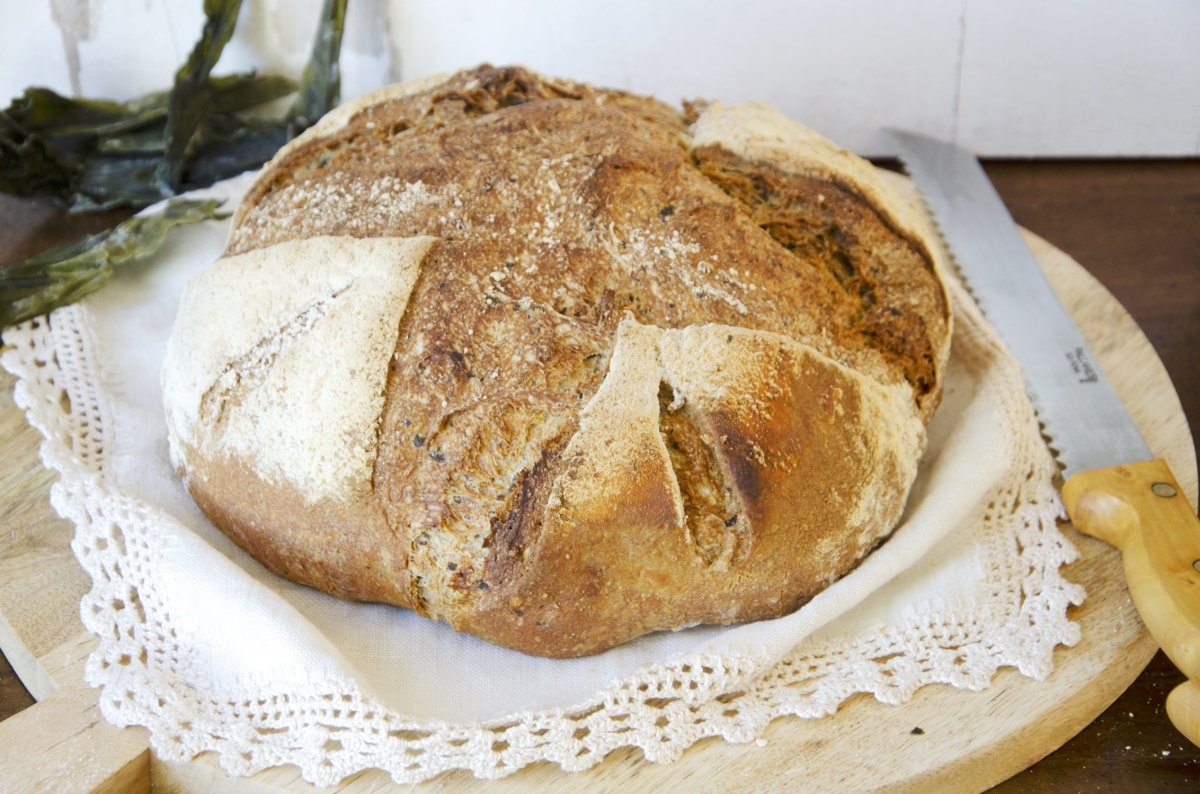
recipe information
-
- Preparation time: 30 minutes
-
- cooking time:1 hour
-
- total time: 8 hours and 30 minutes
-
- rations:8
-
- Category: loaves
-
- type of cuisine: international
-
- Calories per serving (kcal):389
Seaweed bread ingredients for 8 people
For the ferment:
-
- 150 g rye flour
-
- 150g of water
-
- 12 g fresh yeast
To hydrate the algae:
-
- 12 g of dried nori seaweed
-
- 200g of water
For the final dough:
-
- 200 g whole wheat flour
-
- 400 g of bread wheat flour
-
- 350g of water
-
- 13 grams of salt
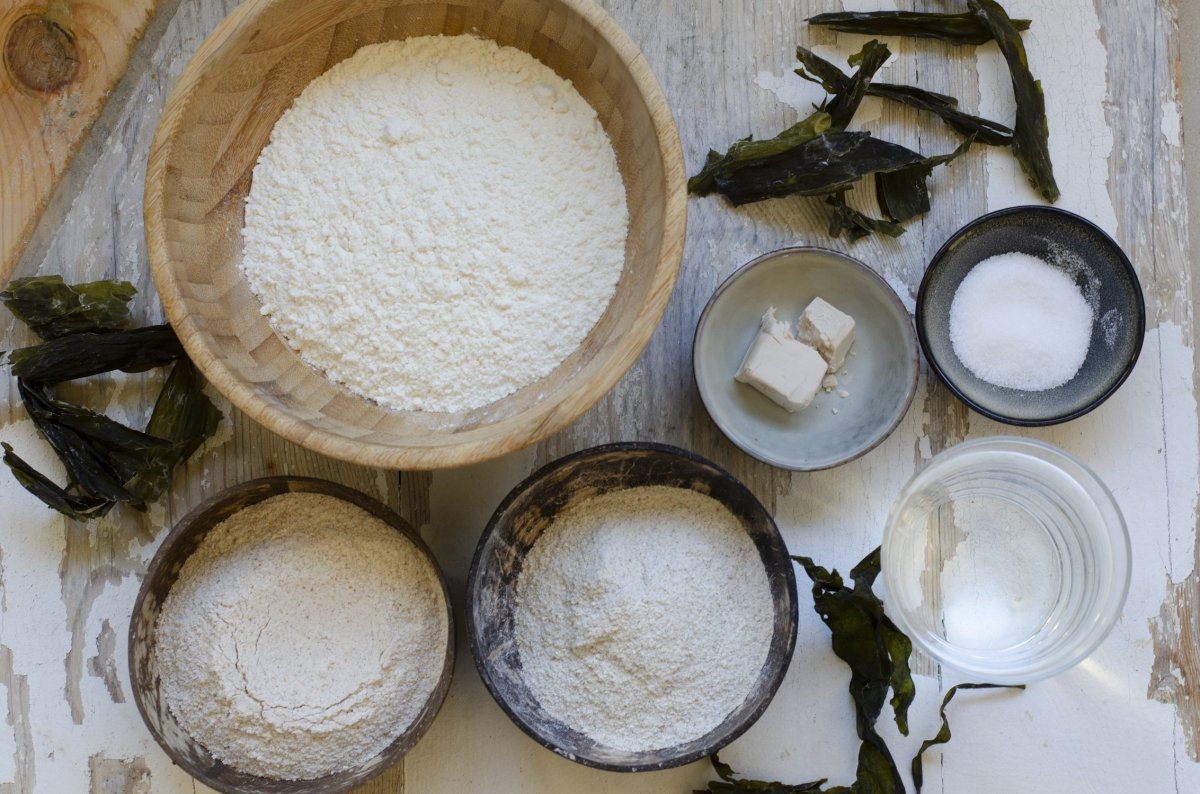
How to make seaweed bread
We weigh and measure the ingredients and start preparing the ferment. Put the 150 g of rye flour in a bowl and add the 150 g of water, in which we will have dissolved the 12 g of fresh yeast. We mix everything until it is integrated, cover and let stand at room temperature until it doubles the volume, for which it will need about three hours.
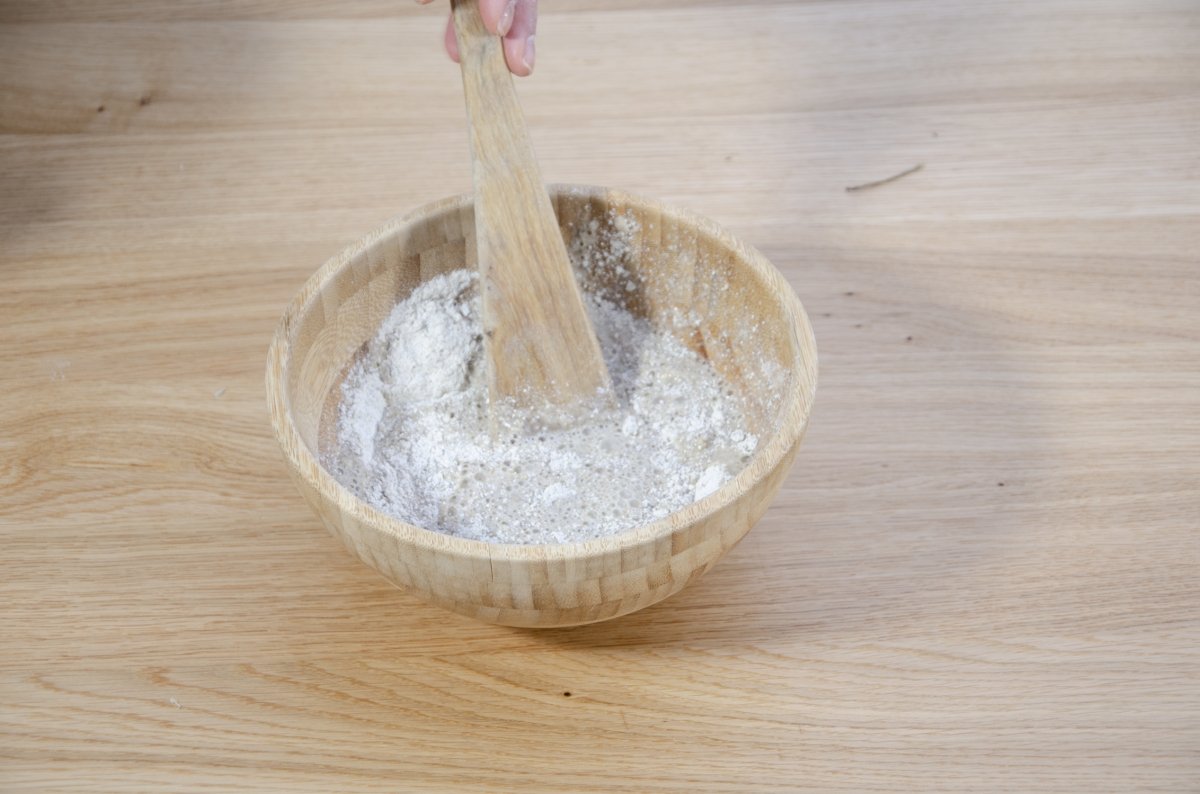
At the same time, in a food processor or in a coffee grinder, pulverize the 12 g of algae, place them in a container and add the 200 g of water. We let them hydrate while the ferment doubles its size.
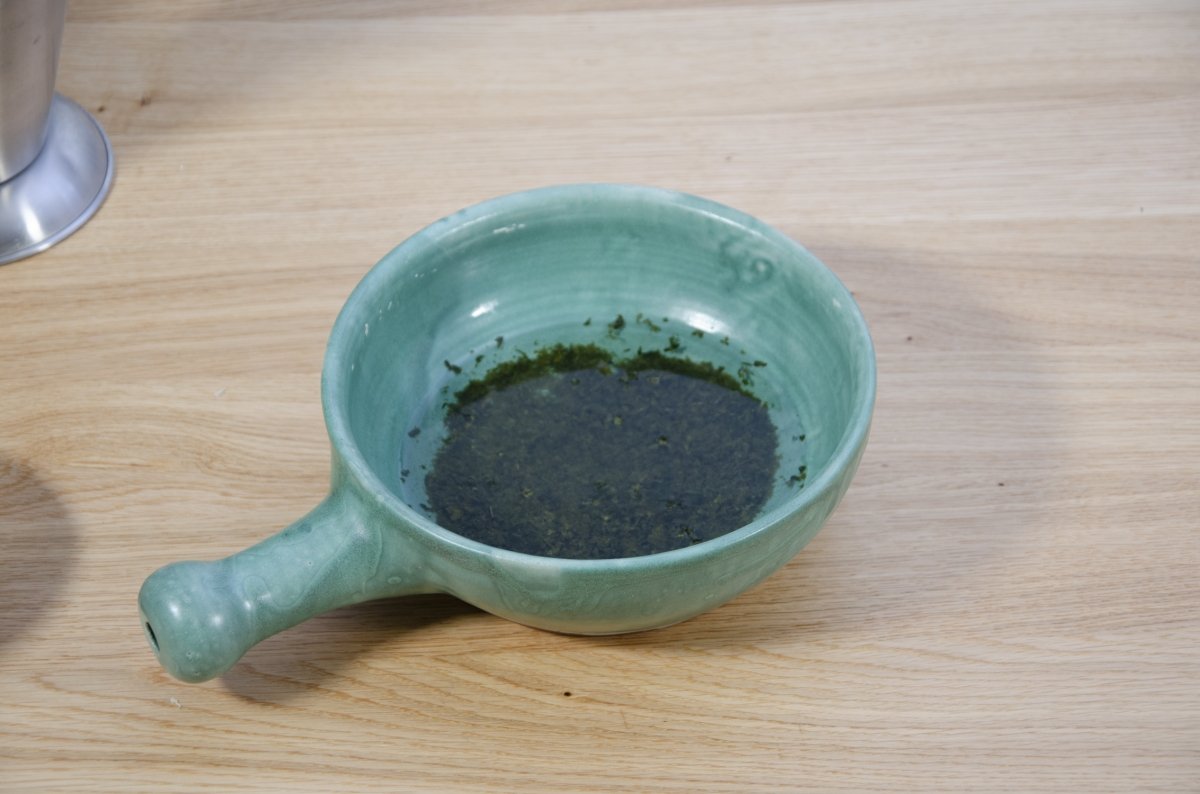
After three hours, the ferment will have doubled in volume and will be bubbly and ready to use in the dough. The algae will also be perfectly hydrated.
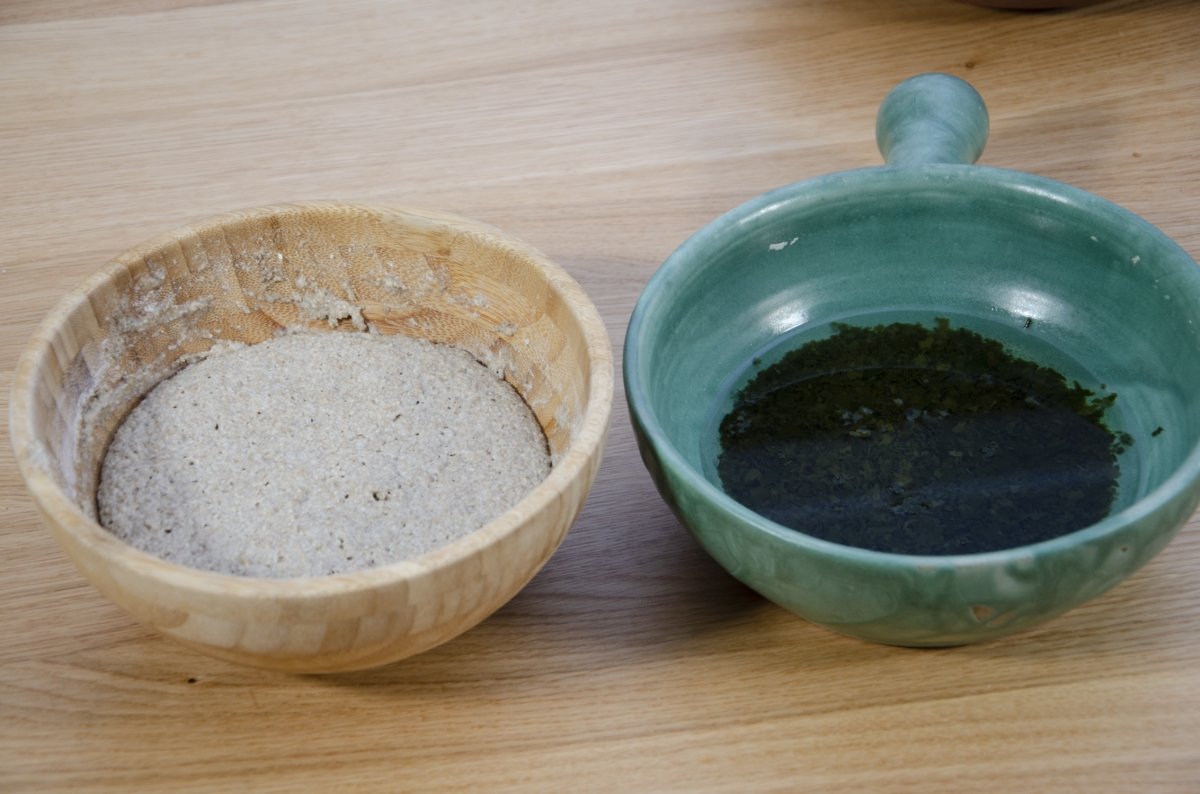
In a large bowl, mix the 200 g of wholemeal flour, the 400 g of bread flour and add the ferment and the hydrated algae with their hydration water. At the same time, we incorporate part of the 350 g of water, reserving a couple of tablespoons, to add along with the salt. Mix everything until all the flour is integrated.
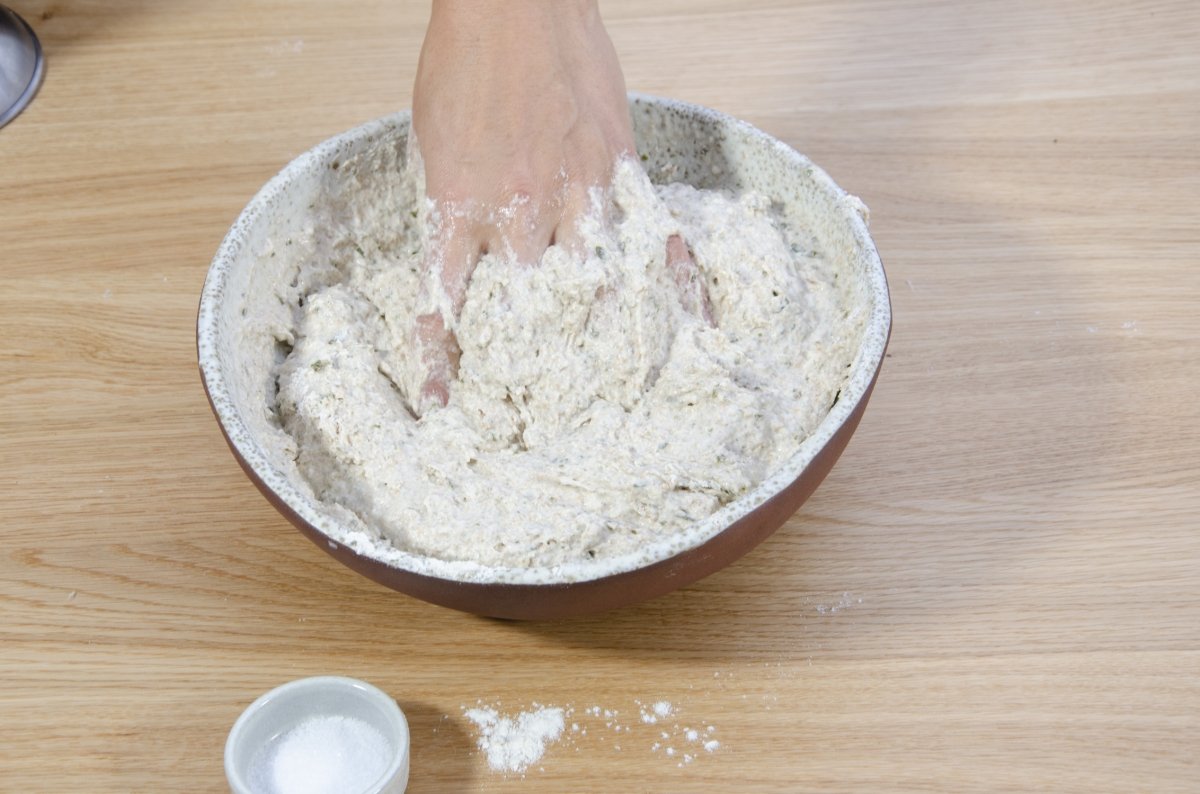
Let the mixture rest for 20 minutes as an autolysis and, after resting, add the 13 g of salt with the water that we had reserved, and knead in the bowl itself by means of folds so that the dough absorbs the water with the salt in such a way uniform.

Finally, we dumped the dough on the counter and kneaded it a little more. We will observe how the dough changes and becomes smooth and elastic, while the gluten develops. We will notice that it becomes more and more tenacious and resistant, with more strength.

Place the dough in a greased bowl and let it rest covered for the first block proofing for a couple of hours. We will give you three folds in the bowl itself, one every 20 minutes during the first hour of the block rise. To do this, we will take the dough with both hands, in half, lift it up, and turn it, folding it back on itself, inside the container itself. We will repeat it a couple more times, cover the container again and let it rest until we do the next folding.
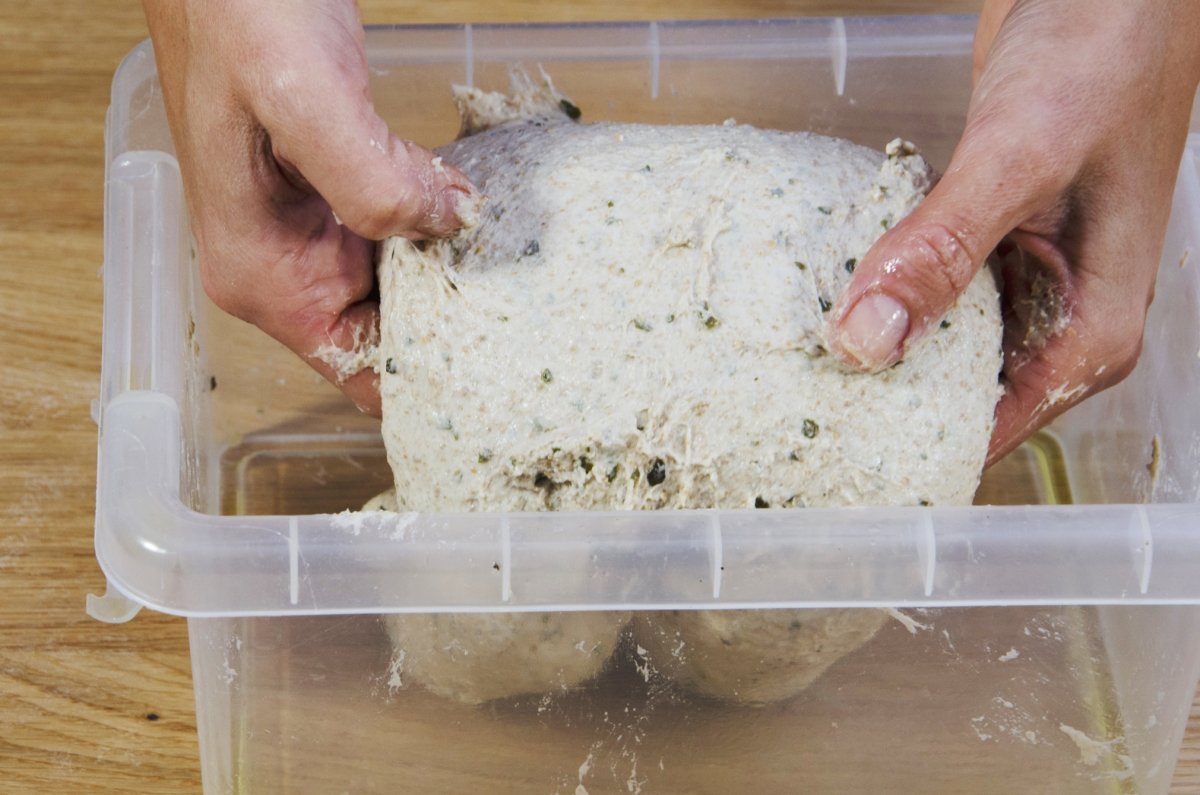
Once we have folded the dough, cover the container and let it rise until it has doubled in volume, which will take another hour and a half.
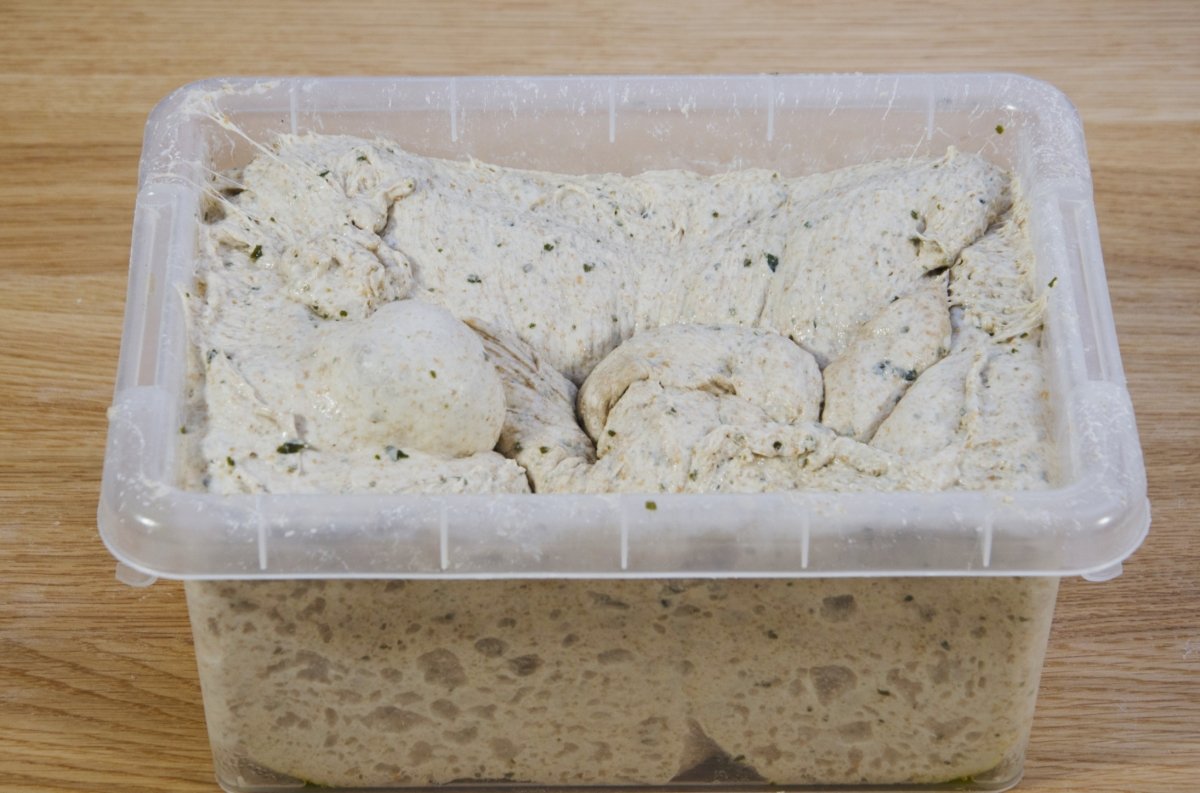
After the block rise, we begin to form the bread. Turn the dough onto a previously floured work table, degas it, shape it into a ball and let it rest for 20 minutes, so that the dough relaxes and is then easier to handle for shaping.

We can give it the shape we like best. In this case, we will make a simple shape by rolling the dough between the two hands and adding tension.
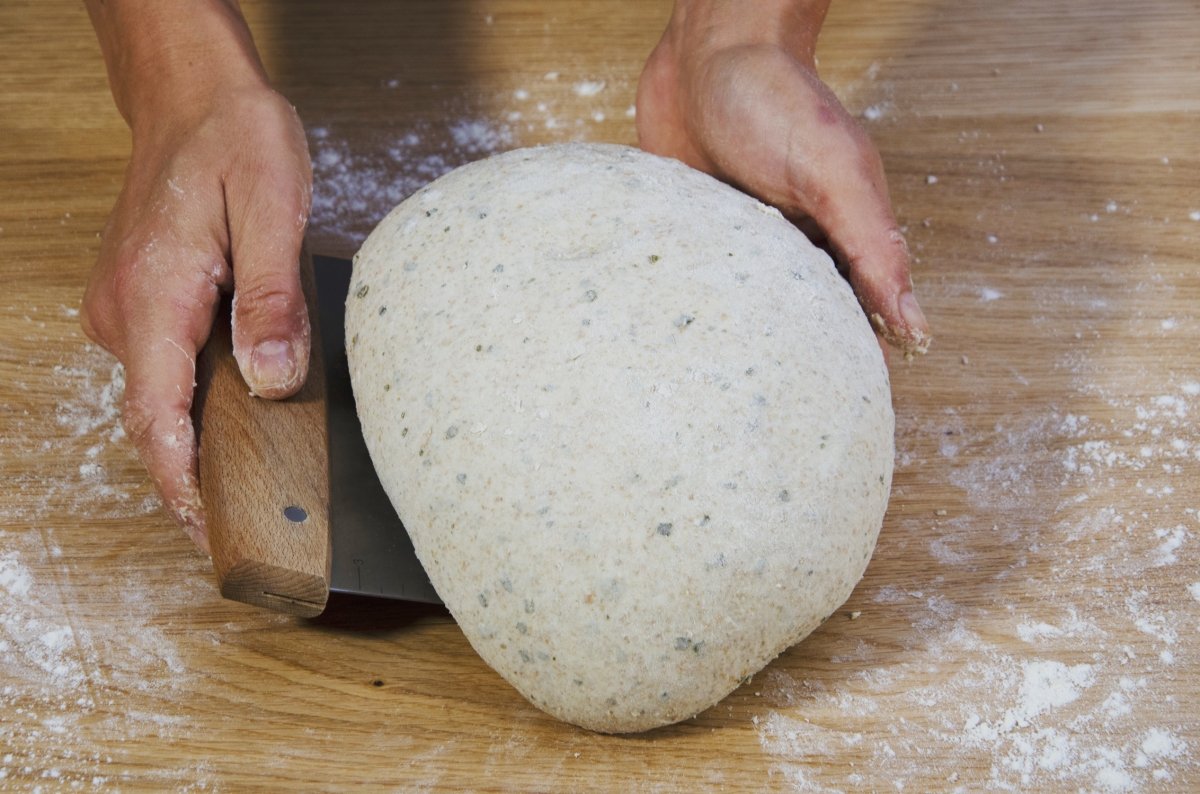
With the help of a spatula, we transfer it to a floured fermentation basket or a bowl covered with a cloth, making sure to leave the folds up. Let it rise covered for an hour and a half.
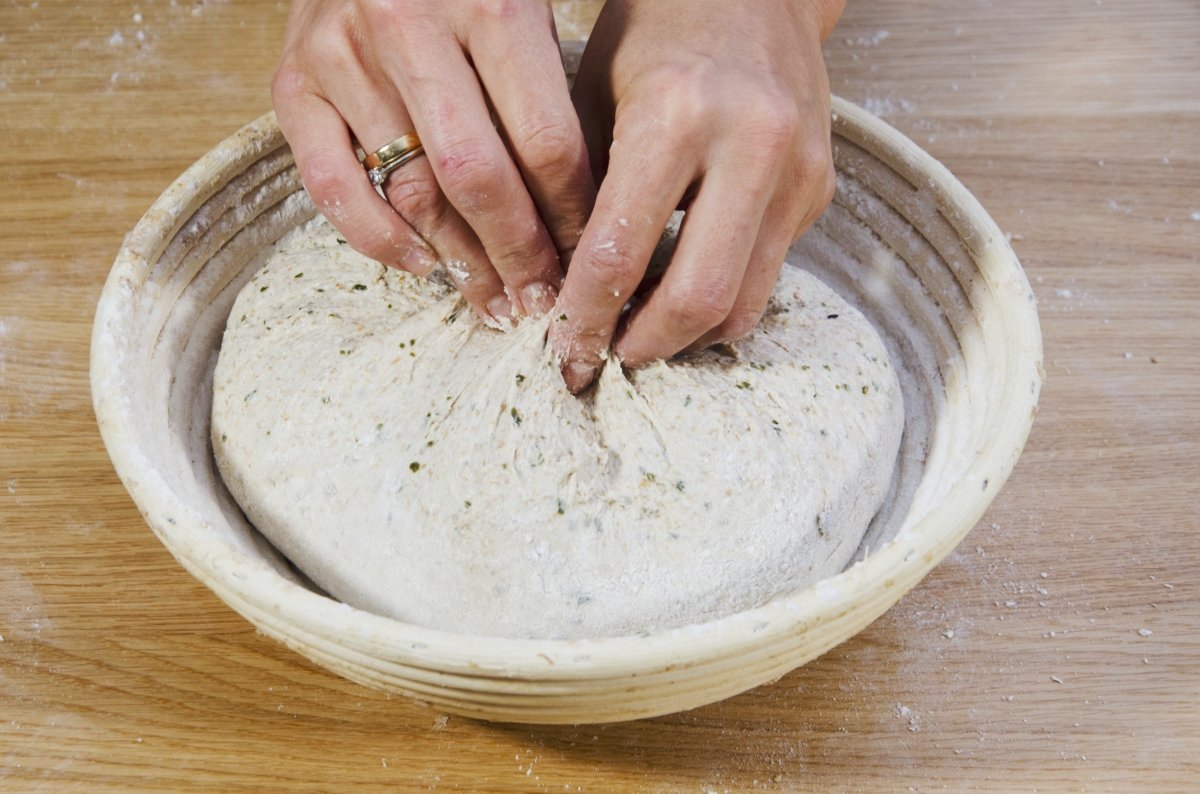
We turn on the oven at a temperature of 250 °C. When the fermentation time has passed and the dough is risen, we turn it over on baking paper or a shovel, and we make some cuts with a blade.
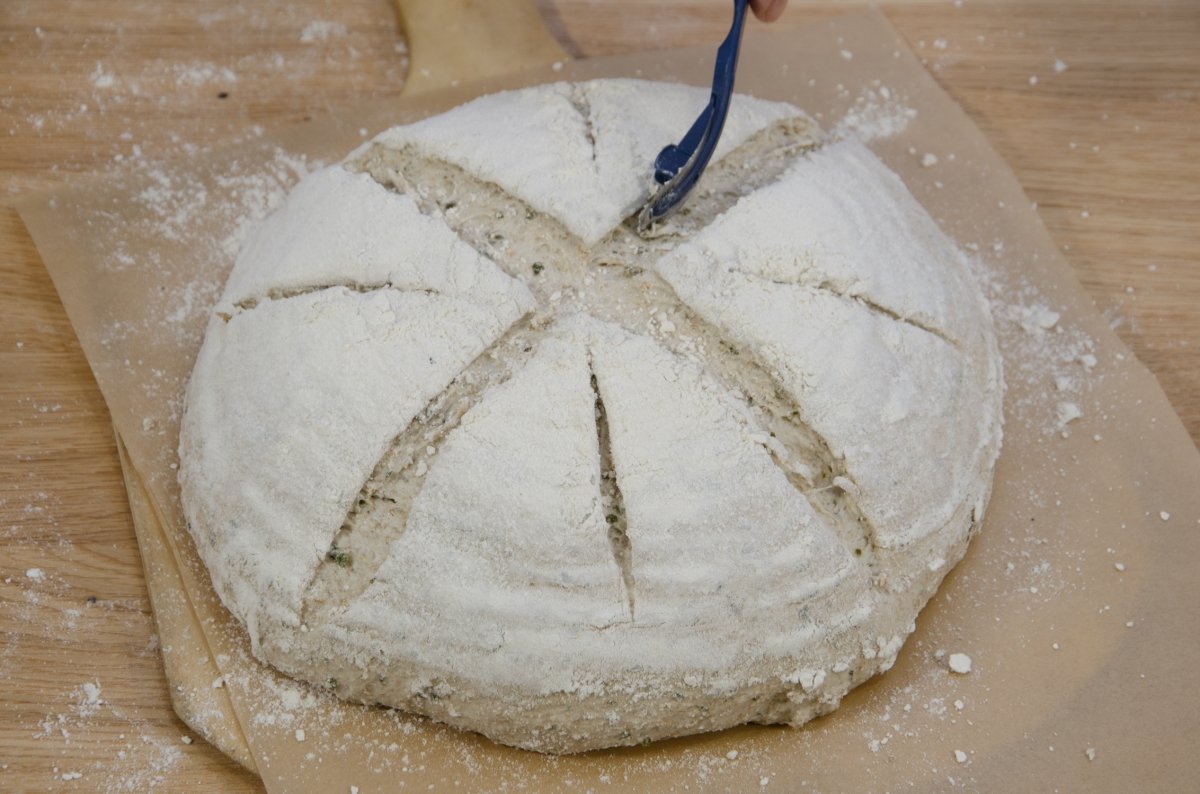
Using the shovel or a tray, we put the bread in the oven, put the heat only below and spray it with water to give it steam. Let it bake like this for 15 minutes. After that time, we also put heat on top, lower the temperature to 230 °C and continue baking the bread for 40 minutes. Once the baking time has elapsed and when the bread has a golden and crispy crust, we lower the temperature to 210 ºC, leave it for 5 more minutes and finally remove it and let it cool on a wire rack.

Let it cool completely and cut it into slices to taste.
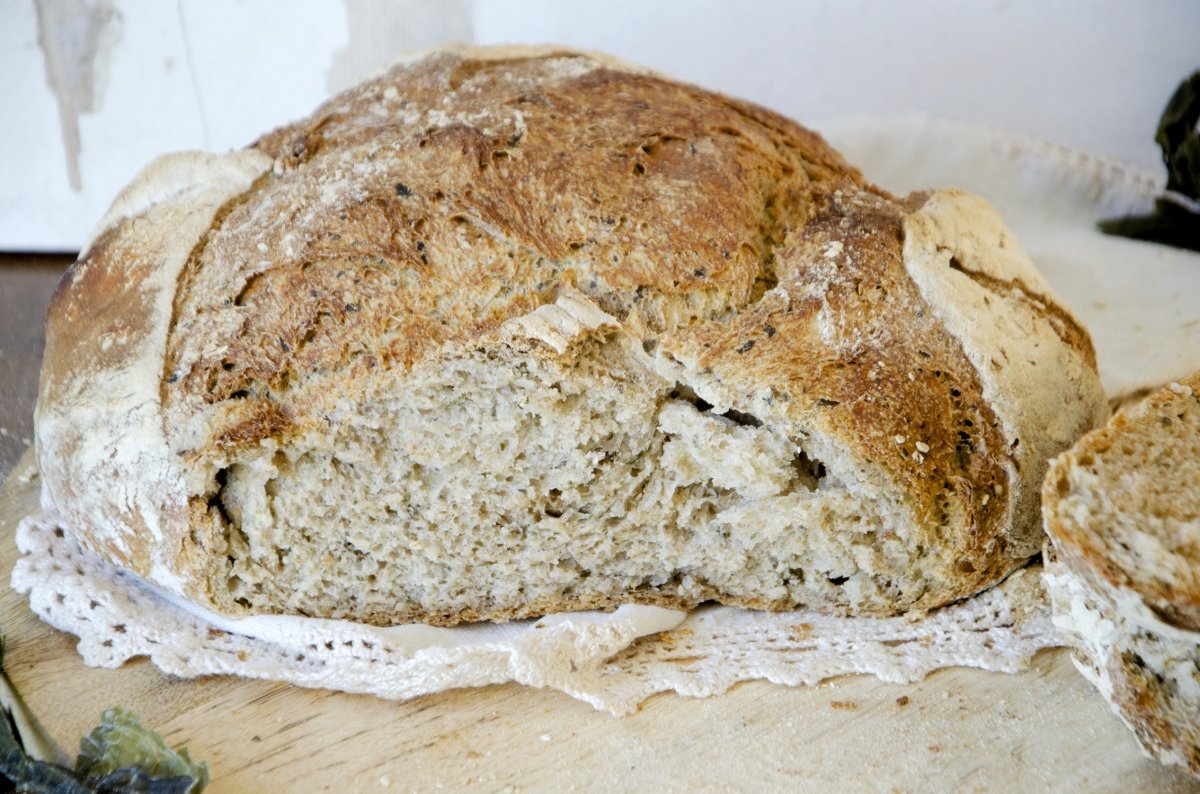
Easy preparation summary
-
- Mix the flour, water and yeast from the ferment, and leave them for about 3 hours until the mixture doubles its volume
-
- Crush the algae and hydrate them with water
-
- After three hours, the ferment and the algae will be ready to use in the dough.
-
- We put together all the ingredients of the dough, except the salt and a little water, mix and let it rest for 20 minutes.
-
- After the rest, add the salt with the reserved water, and knead in the bowl by folding
-
- Transfer the dough to a surface and knead it until it is smooth and elastic.
-
- We put the dough in a greased container, we will make several folds for an hour
-
- Let it ferment for an hour and a half more, or until it doubles its volume
-
- Once the dough is fermented, we turn it onto a floured table, degas it, round it and let it relax.
-
- We give it the way we like
-
- Transfer the dough to a proofing basket with the folds facing up, cover and let it rise for an hour and a half.
-
- We turn on the oven at 250 °C, turn the dough over a shovel and weave it
-
- Bake for 15 minutes with steam and heat only below, then heat above and below for 40 minutes at 230°C. Finally, we bake for 5 minutes at 210 °C and let cool on a wire rack.
-
- Let the bread cool before cutting it into slices.















Welcome to Sweet Eats Cakes
Where delectable dreams come to life in the form of exquisite confections! Sweet Eats Cakes isn't just about taste; it's about turning moments into memories. Our cakes are crafted with precision, attention to detail, and a sprinkle of magic to ensure that each slice is not just a treat for the taste buds but a feast for the eyes!